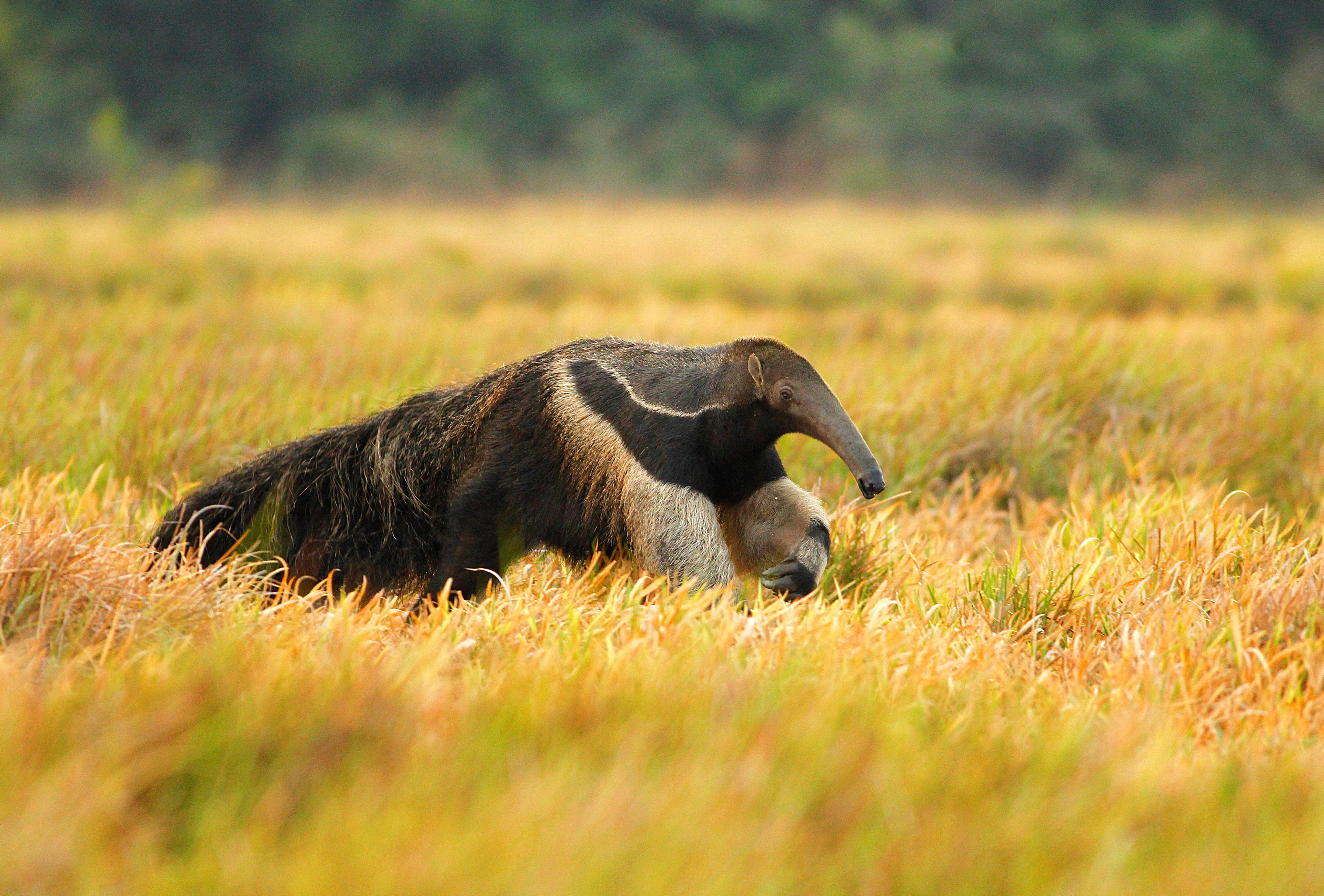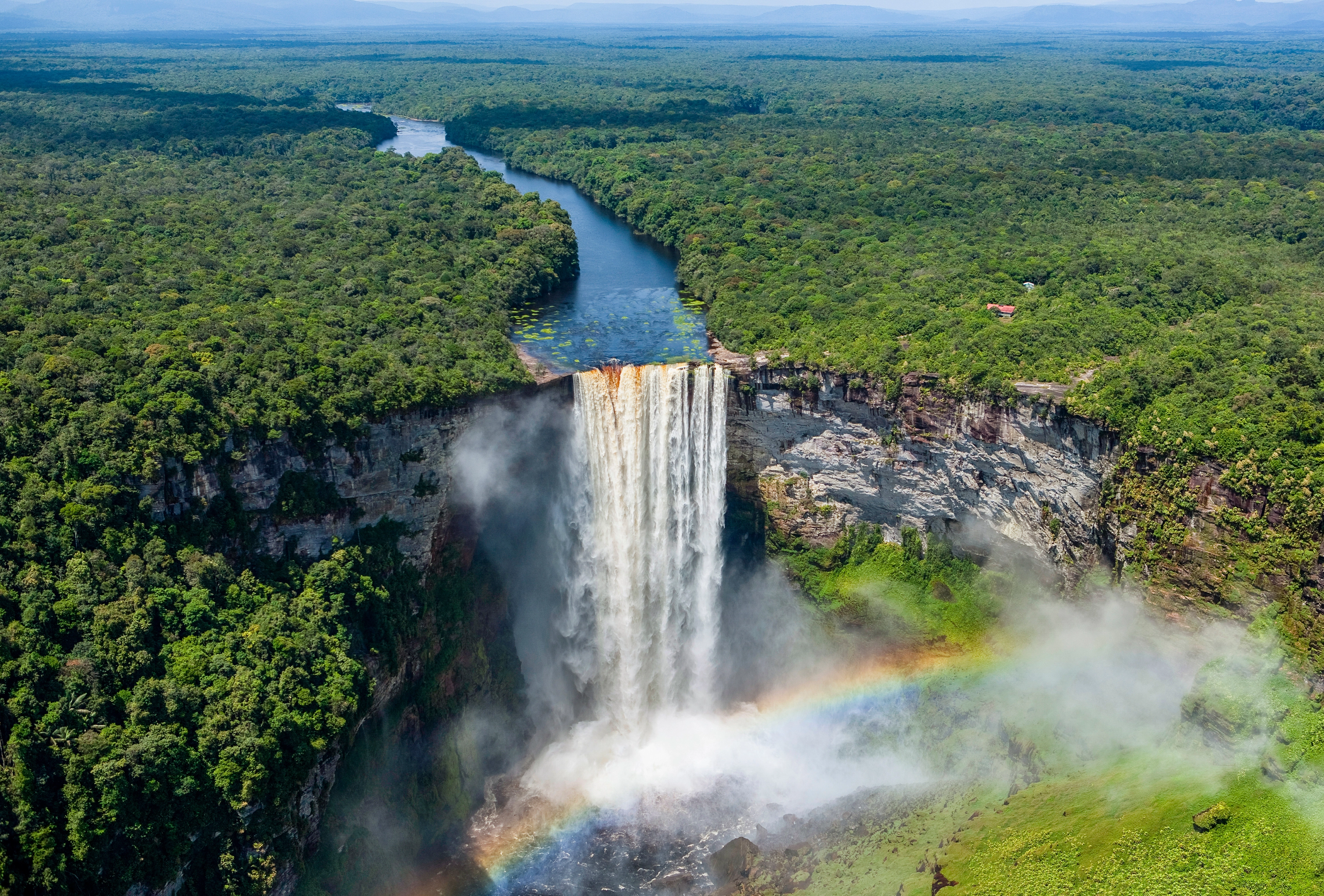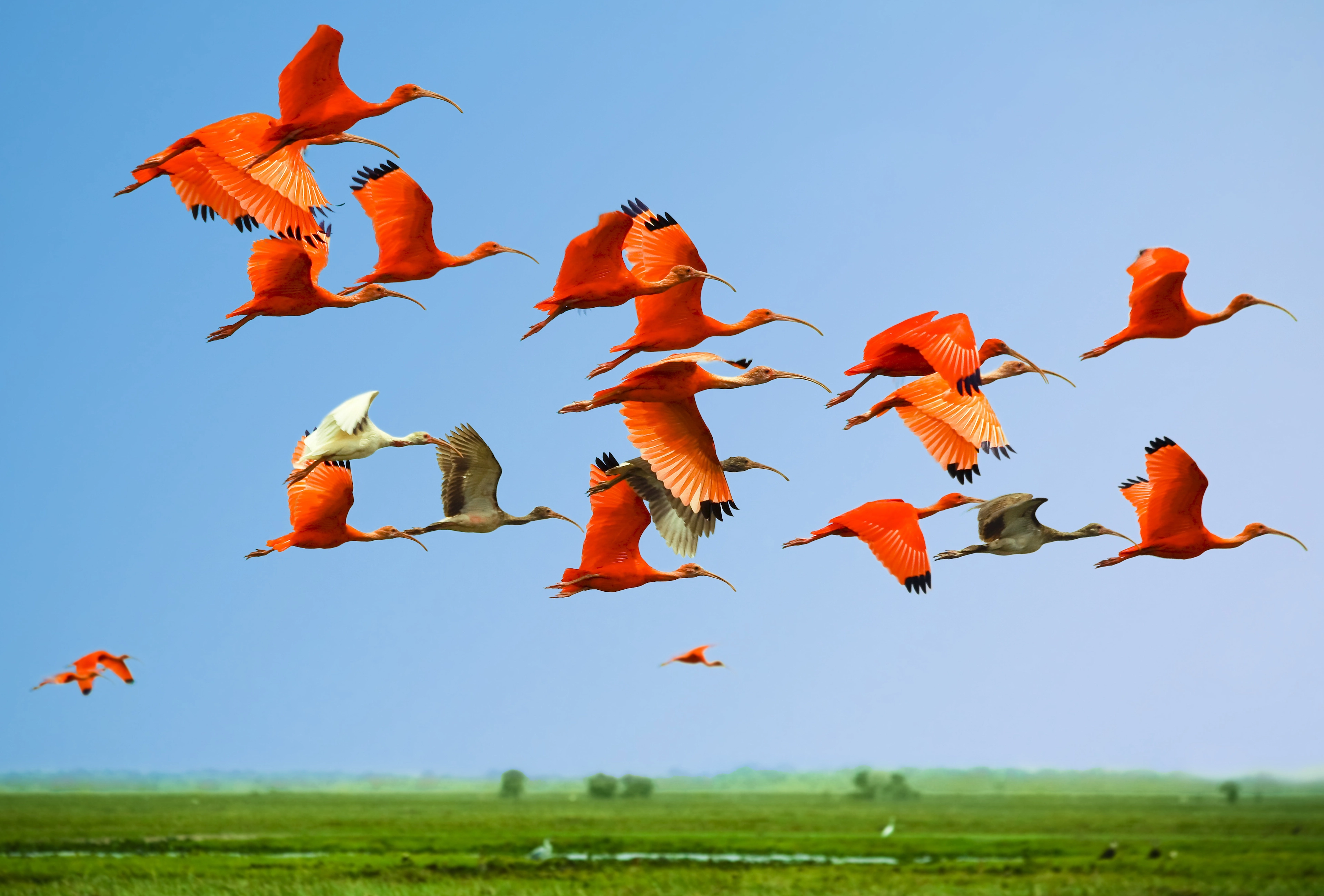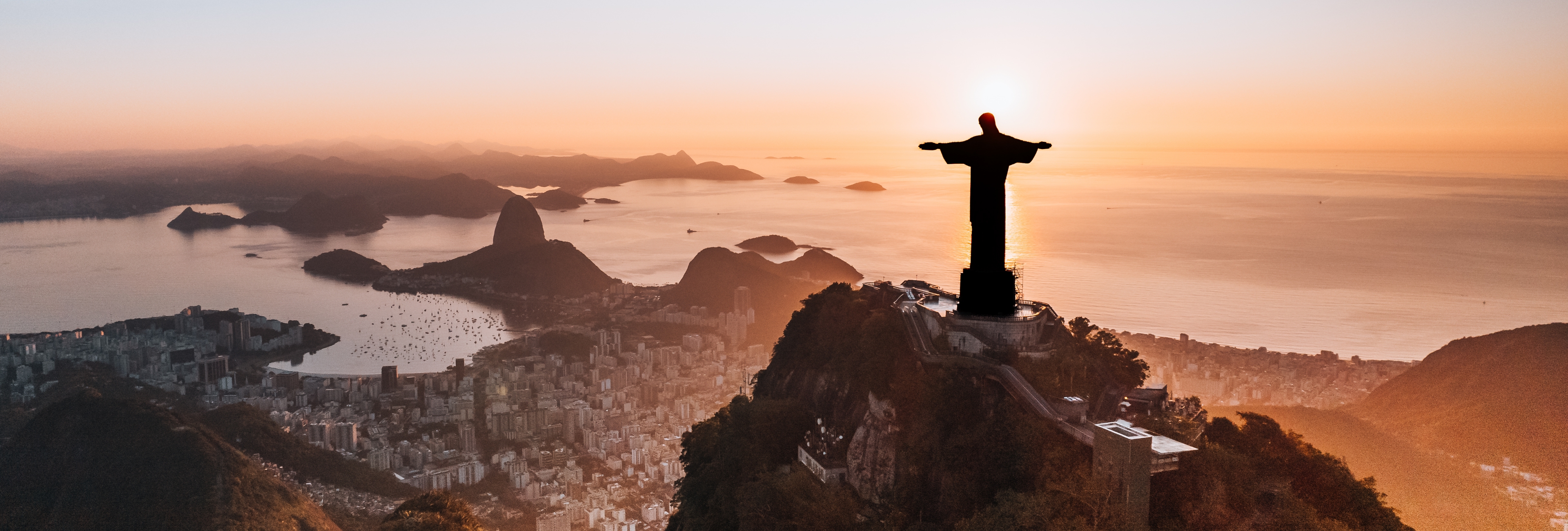A Journey of Nature, Culture, and Conservation
This immersive private tour explores Guyana’s unique natural and cultural heritage through hands-on experiences, conservation efforts, and visits to some of its most scenic and significant landmarks. Highlights include engaging in Giant Anteater research and Black Caiman studies at Wichabai Ranch and Caiman House Field Station, centres dedicated to conservation in the stunning Rupununi savannah. At Rewa Eco-Lodge, immerse in Macushi community life while enjoying guided activities in the biodiverse landscapes along the Rupununi River.
Visit Kaieteur Falls, the world’s highest free-falling waterfall, and the incredible Iwokrama Canopy Walkways at Atta Rainforest, along with opportunities to spot rare species such as the Guianan cock-of-the-rock. Historic Karanambu Lodge offers river and savannah excursions, continuing a legacy of preservation and cultural richness. This journey combines ecotourism, culture, and conservation, ensuring an unforgettable adventure.

Visit several locations in Guyana

Accommodation detailed in itinerary

See details in itinerary below
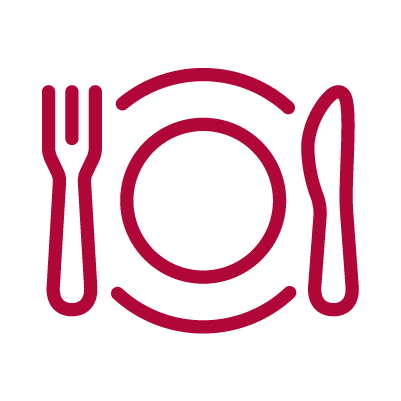
14 breakfasts, 11 lunches, 11 dinners

International and Domestic Flights

Our holidays are ATOL Protected

We will help you plan your holiday

Customers rate us highly on Trustpilot
Highlights
- Volunteer at Wichabai Ranch, headquarters of the SRCS and leading Giant Anteater research centre.
- Participate in an ongoing field study of the endangered Black Caiman
- Stay at the Macushi community owned Rewa-Eco Lodge and part-take in village life
- Full day tour of the magnificent Kaieteur Falls
- Stay at Karanambu, the former home of conservationist Diane Mc Turk, known for its remarkable biological and cultural richness
What's Included
- International flights
- 14 nights’ accommodation
- 36 meals; 14 breakfasts, 11 lunches, 11 dinners
- All tours as detailed in itinerary
- All domestic flights & transfers
Prices from £9,949 pp
Excludes:
- Meals not indicated in your itinerary
- Local departure taxes payable locally
- Items of a personal nature such as laundry and drinks etc
- Tips for guides and drivers (discretionary)
- Camera or video fees at any sites
Quick Itinerary
Wildlife Conservation & Indigenous Communities of Guyana 16-day Itinerary
Days 1-2 UK - Georgetown
Arrive in Georgetown and transfer to the historic Cara Lodge for some relaxation. The adventure kicks off the next morning with a street food breakfast, followed by a market and city tour exploring the vibrant cultures, customs, and sights of the Guyanese capital. Lunch awaits at the renowned Backyard Café, before an afternoon river cruise offers views of Georgetown’s historic waterfront and the Demerara Harbour Bridge. The day concludes with a stunning sunset as Scarlet Ibis, Snail Kites, Herons, and Egrets gather to roost in the mangroves.

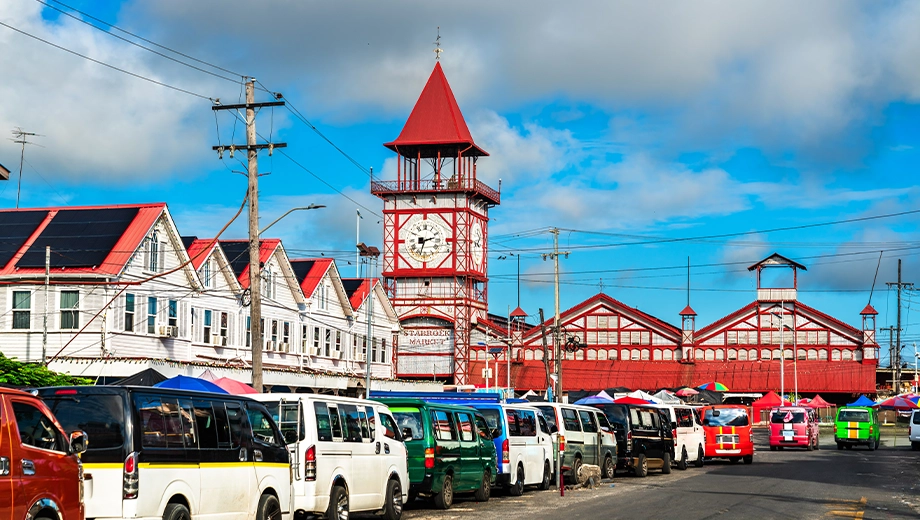
Day 3 Kaieteur Falls
A morning visit to Georgetown’s extensive Botanical Gardens offers the chance to spot the vibrant Blood-coloured Woodpecker, along with many other bird species. A short flight then soars over tropical rainforest, leading to Kaieteur Falls, the world’s tallest free-falling waterfall at 741 feet. Kaieteur’s unique micro-environment is home to the tiny golden frog and the rarely spotted Guianan cock-of-the-rock, nesting nearby.
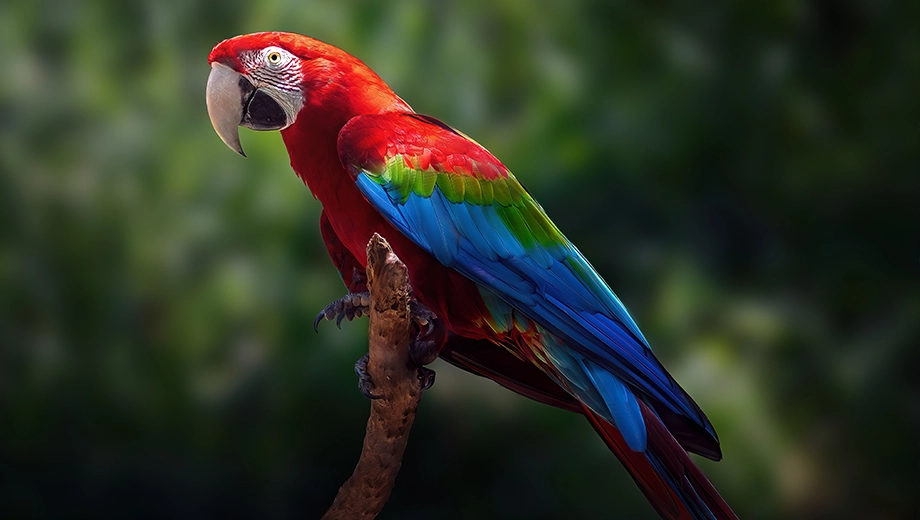

Days 4-5 Iwokrama Rainforest
On the journey to Atta Rainforest Lodge, there are many chances to spot wildlife along the way, this route is known as one of the best places to spot the elusive Jaguar! Atta Rainforest Lodge is home to the Iwokrama Canopy Walkway. Four suspension bridges connect platforms 30 meters high, offering panoramic views of the lush canopy. An early morning visit to the walkway, when wildlife is especially active, enhances opportunities to spot various bird species and monkeys. Nearby trails also provide excellent wildlife-viewing experiences during the day and on night walks.


Days 6-7 Rewa Village
Following a short trail to hopefully spot the dazzling Guianan Cock-of-the-rock, travel onward by boat along the Rupununi River, where sightings of wild Giant River Otters and Black Caiman are possible, until reaching the Amerindian village of Rewa. With around 220 residents, primarily from the Macushi tribe, the community practices traditional subsistence farming, fishing, and hunting, with limited cash employment opportunities. In 2005, they established Rewa Eco-lodge to create sustainable eco-tourism. Guests visiting Rewa can explore local homes, experiencing daily village life.
Across the Rupununi River from the lodge, a short boat ride leads to a serene oxbow lake, where a wooden deck provides close-up views of Victoria Amazonica—the world’s largest waterlily and the national flower of Guyana. At dusk, the lake’s golden hues and birds flying in to roost create an enchanting experience.
The next day, enjoy a riverside breakfast at dawn, before heading out for a hike up Awarmie Mountain for uninterrupted views of the Rupununi River below and across to the distant peaks of the Kanuku Mountains.
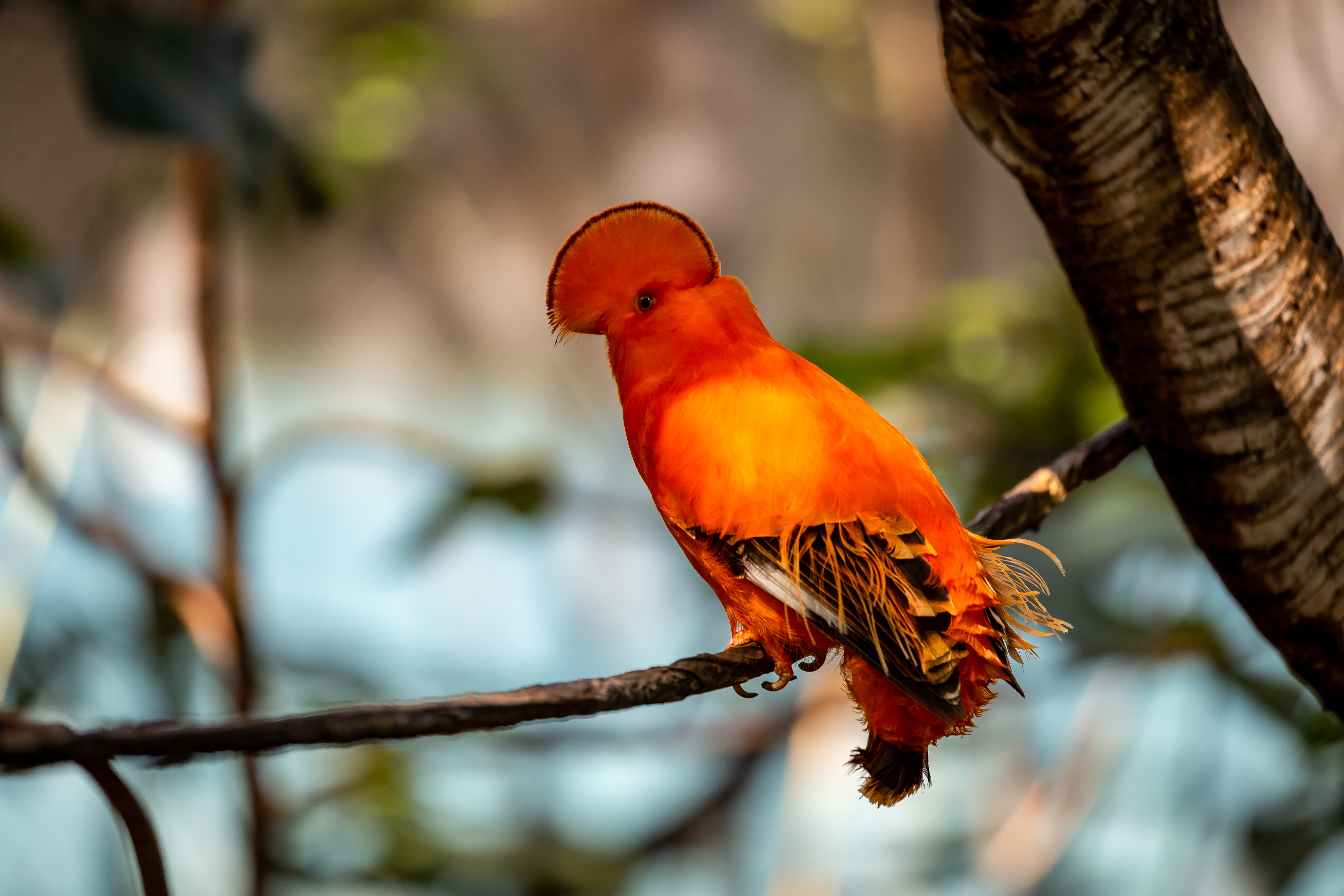
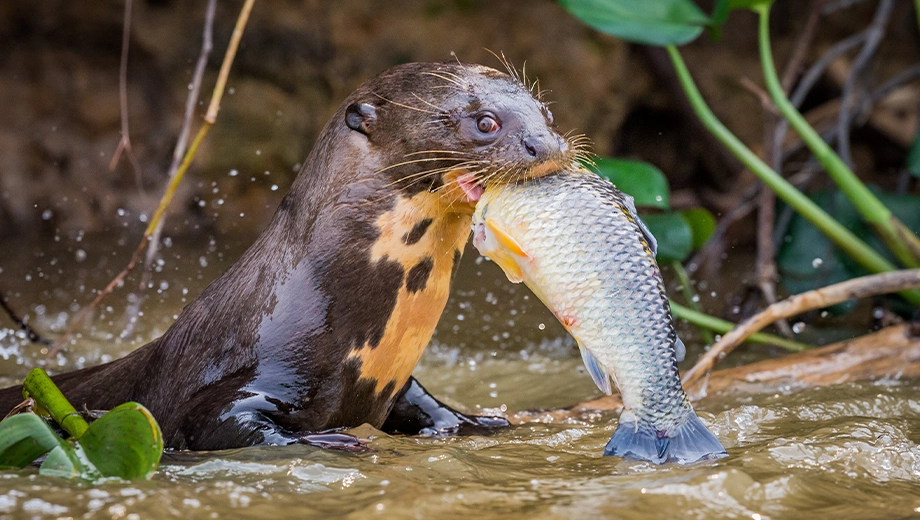
Days 8-9 Karanambu Lodge, North Rupununi
Explore the village of Aranaputa and its community-operated Peanut Butter Factory before continuing to the village of Yakarinta for a home-cooked lunch on the veranda, accompanied by engaging stories from local character, Charlie De Freitas.
Travel by boat to Karanambu Lodge, located in the North Rupununi, it spans 110 square miles of former cattle land and is known for its remarkable biological and cultural richness. Once the home of conservationist Diane Mc Turk, Karanambu encompasses riparian forests, expansive savannahs, marshy ponds, and a stretch of the Rupununi River. This region is deeply rooted in history and was famously written about by a young David Attenborough. The varied landscape of Karanambu offers a range of guided excursions, with two each day to explore the river and savannah, home to giant anteaters.
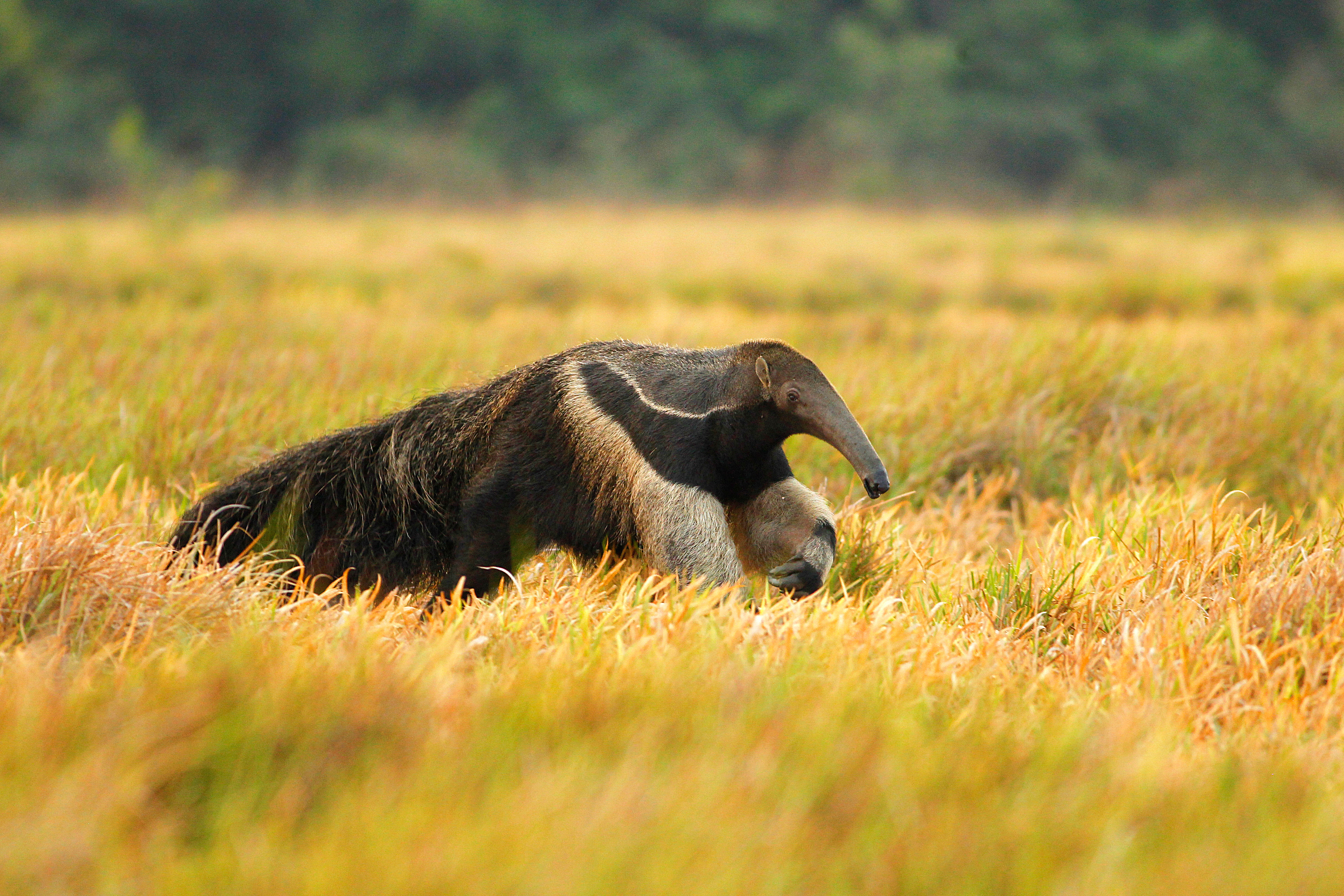
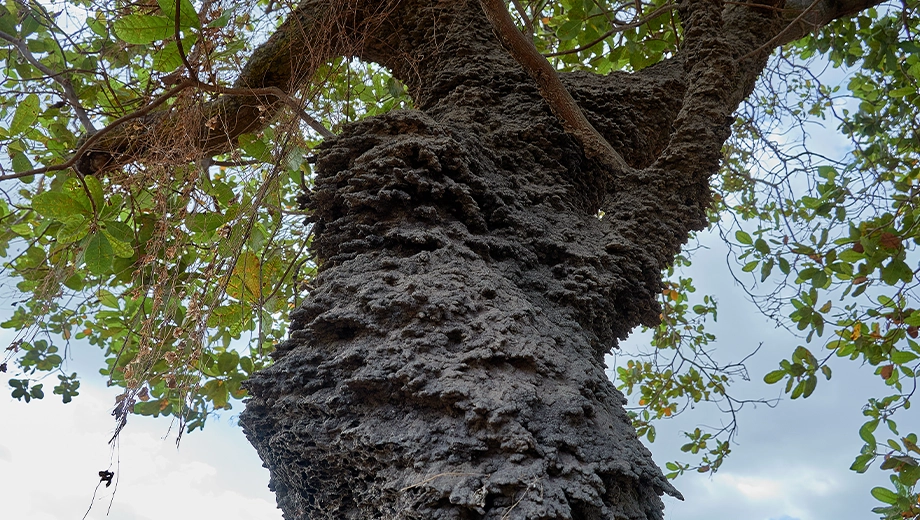
Day 10 Caiman House Field Station
At the edge of Yupukari Village in the Central Rupununi is Caiman House Field Station, a combination guest-lodge and education centre focused on research and conservation projects along the nearby Rupununi River. The Field Station is the hub of several participatory development projects and a turtle conservation program. Guests have the unique opportunity to support and participate in an ongoing field study of the endangered Black Caiman.

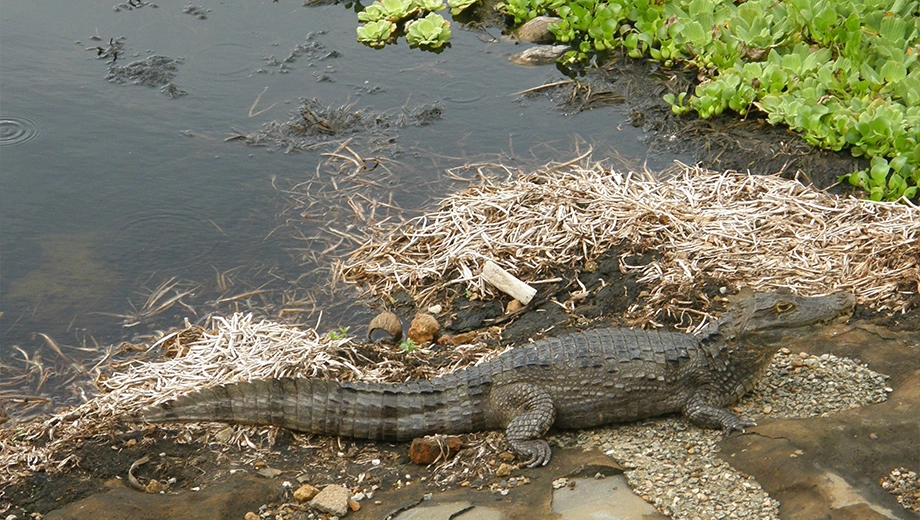
Days 11-13 Wichabai Ranch, South Rupununi
A short journey leads to Wichabai Ranch, headquarters of SRCS and an eco-lodge in the South Rupununi Savannahs. Evenings include dinner and a presentation by SRCS members, showcasing conservation achievements. Mornings start early, with SRCS-led Giant Anteater research and monitoring activities. While tracking anteaters, all findings contribute to ongoing conservation data, and nearby bush islands vital to local wildlife are monitored for signs of hunting or logging, using camera traps to track jaguars, ocelots, and other species.
Wichabai has also pioneered capybara ranching, providing a free-range habitat for the capybaras, who will soon help repopulate local areas, counteracting declines due to hunting. In Sand Creek village, SRCS rangers guide visitors to locate and record sightings of the endangered Red Siskin. Thanks to SRCS’s efforts, this species, once critically endangered, is now protected by large community conservation zones, an achievement which earned Ignacio a 2024 Whitely Award for Conservation.
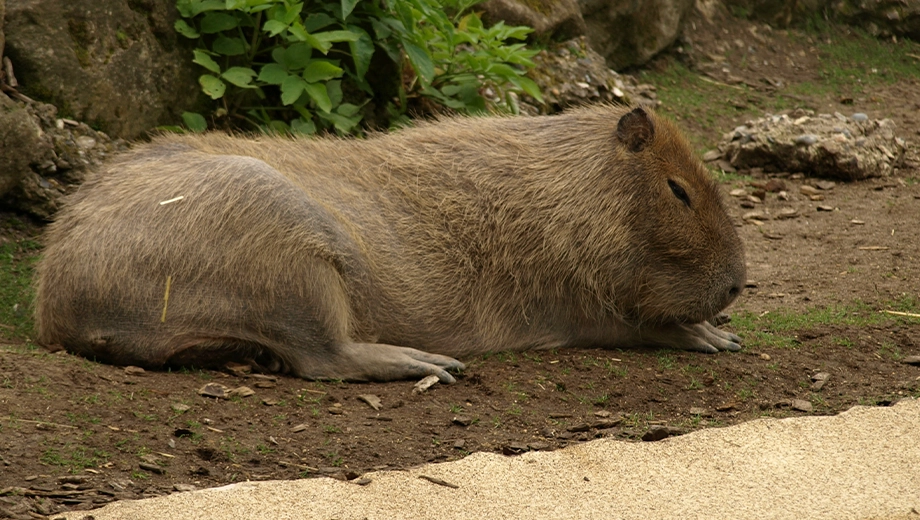
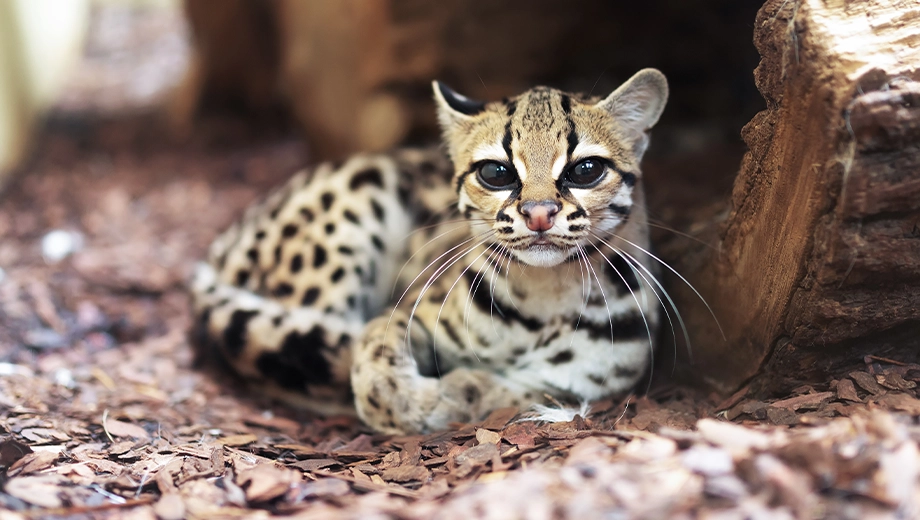
Days 14-16 Georgetown - UK
In the morning, join a senior ranger for the chance to record bird species, animal tracks, and signs of human disturbance in the savannah. Take the afternoon flight back to Georgetown, where an exclusive dinner at a local chef’s garden offers a taste of Guyana’s rich culinary landscape. Chef Eon John, known as the "Singing Chef," prepares dishes with a personal touch and serenades guests.
On day 15, transfer to the airport for your return flight, arriving back in the UK the following day.
Why Book Our Wildlife Conservation & Indigenous Communities of Guyana Holiday?
Truly Individual and Trusted
- Truly individual holidays – every holiday we create is designed around you, the places you want to see and the things that are important to you.
- Dedicated Travel Specialists – your dedicated Specialist will have firsthand knowledge of the destinations and experiences we offer, enabling us to make perfect recommendations.
- First-class service – all our excursions and transport partners have been hand-selected to ensure they provide the best quality, experience and value.
- 100% financial protection – our holidays are ATOL protected and we’re an assured member of the Association of Independent Tour Operators (AITO).
- My Routes Rewards programme – as a thank you for being our trusted customer, we offer one of the most generous and flexible reward programmes in the industry.
What makes our Wildlife Conservation & Indigenous Communities of Guyana holiday Truly Individual?
The trusted choice for travellers seeking the ultimate Guyana adventure

An award-winning and leading UK tour operator providing Truly Individual holidays across Latin America

Every holiday we create is designed around you, the places you want to see and the things that are important to you.

Our passionate team of knowledgeable Latin America Travel Specialists are ready to help you plan the trip of a lifetime.

We consistently achieve 5-star ratings on Trustpilot, reflecting our first-class service and premium holiday experiences.
What Our Clients Say About Us
Speak to a dedicated Guyana Travel Specialist today
All our Guyana itineraries can be tailored to your unique requirements. Enquire about our Wildlife Conservation & Indigenous Communities of Guyana holiday and let us plan your perfect Latin American adventure.

